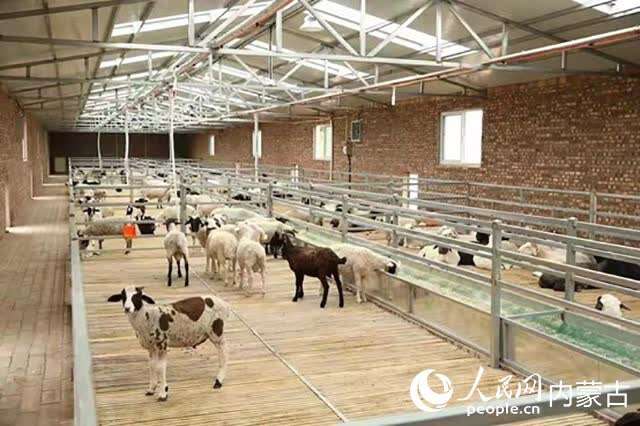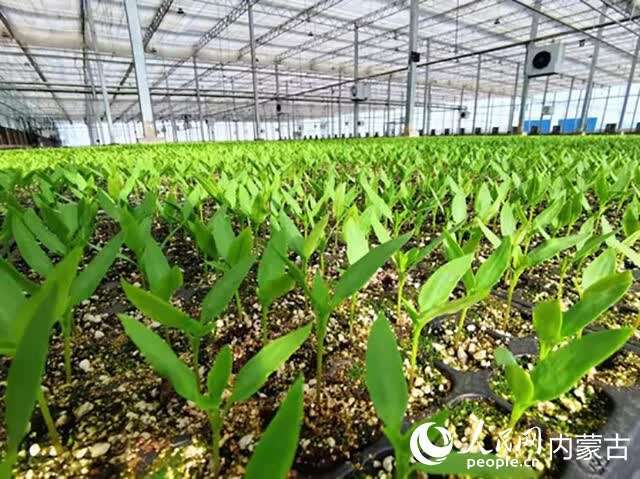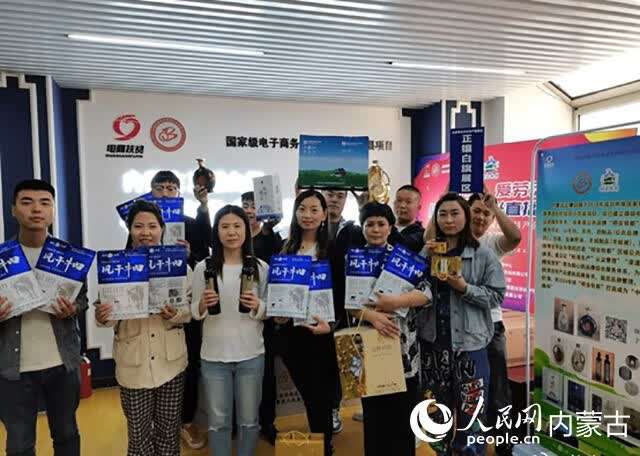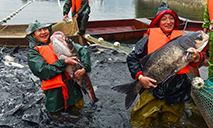Advanced technologies promote high-efficiency development of agriculture and animal husbandry in N China’s Inner Mongolia
Jiya is a herder who owns a 600-squate-meter sheepfold in Otog Front Banner, Erdos city in north China’s Inner Mongolia Autonomous Region. Thanks to various advanced technologies, such as big data, the man can manage the ranching business conveniently through a digital platform on his smartphone.

Photo shows a sheepfold powered by digital technologies in Otog Front Banner, Erdos city in north China’s Inner Mongolia Autonomous Region. (People’s Daily Online/Fu Lijuan)
With tasks such as feeding the sheep, providing water for the animals, administering medicines to the sheep, humidifying and purifying air inside the sheepfold, and disposing of sheep dung nowadays being able to be handled automatically, the man can feel assured after leaving his home for other business for several days at a time.
In October 2020, Togtoh county in Hohhot city, Otog Front Banner in Erdos city, and Jalaid Banner in Hinggan League were selected to participate in the “digital village” pilot project which aimed to promote the application of digital technologies in rural areas to boost rural modernization.
Nowadays, advanced technologies can be seen everywhere in the operations of agricultural and animal husbandry businesses. At a modern agricultural industrial park in Jalaid Banner, fish, crayfish, crabs and ducks are raised in rice paddies. Xu Huimin, director of the management committee of the park, introduced that this growing pattern of production saves water and boosts the efficiency of resource utilization. The park has also adopted remote sensing satellites to monitor rice farming, such as the growth stage of the rice, irrigation and fertilization levels, and temperature control.

Photo shows a seedling greenhouse in Otog Front Banner, Erdos city in north China’s Inner Mongolia Autonomous Region. (People’s Daily Online/Fu Lijuan)
In 2018, the park was approved to be one of the first state-level modern agricultural industrial parks in the country and the first of its kind in the autonomous region. Over the past four years, Jalaid Banner invested 1.55 billion yuan ($243million) into a smart agriculture demonstration zone covering 100,000 mu (about 6,666 hectares).
The park also established a digital agricultural technology service center to support agricultural operations through the application of information technologies and further lifted the level of digitalization in agriculture. At present, the rice planting area in Jalaid Banner has exceeded 900,000 mu, with the annual yield of high-quality rice standing at 300,000 tonnes.
Nowadays, unmanned harvesters are widely adopted to reap crops in Jalaid Banner. “This year, I employed an unmanned harvester to reap 200 mu of rice fields of mine. It took a little more than three hours for the machine to finish its job,” said Huang Yu, a local farmer. The harvesters, which have been equipped with the Beidou Navigation System (BDS), are able to automatically reap the crops following a preset route in the field, introduced a technician.

Photo shows a livestreaming room located in Daxing district, Beijing, which has been designated to promote agricultural products from Zhengxiangbai Banner, north China’s Inner Mongolia Autonomous Region. (People’s Daily Online/Fu Lijuan)
The Internet has meanwhile offered local companies in Inner Mongolia a helpful hand when selling the products produced by them locally. Dong Lianzhu, head of a seasoning cooperative in Xinyingzi township, Togtoh county in Hohhot city, invited a professional livestreamer to partake in the latest livestreaming session to promote locally produced seasonings. During the show, nearly 300 bottles of seasoning were sold.
“Over the last year, the sales of the seasonings sold through online and offline channels were almost the same, but soon online sales will outpace offline sales,” said Dong, who had initiated a shift toward online sales channels starting in 2020. Not only Togtoh county, but quite a lot of farmers and herders from other places in Inner Mongolia have nowadays come to regard livestreaming as an effective way to promote local specialties.
In recent years, Otog Front Banner in Erdos has made efforts to constantly improve infrastructure, integrate digital resources in rural and urban areas, and has boosted access to broadband communication networks, mobile Internet and digital television networks. It has built 654 4G macro stations and 44 5G base stations, having realized full broadband coverage in urban and rural areas within the banner and a 100 percent penetration rate for fiber optic networks in all villages under its administration.
Photos
Related Stories
Copyright © 2021 People's Daily Online. All Rights Reserved.










